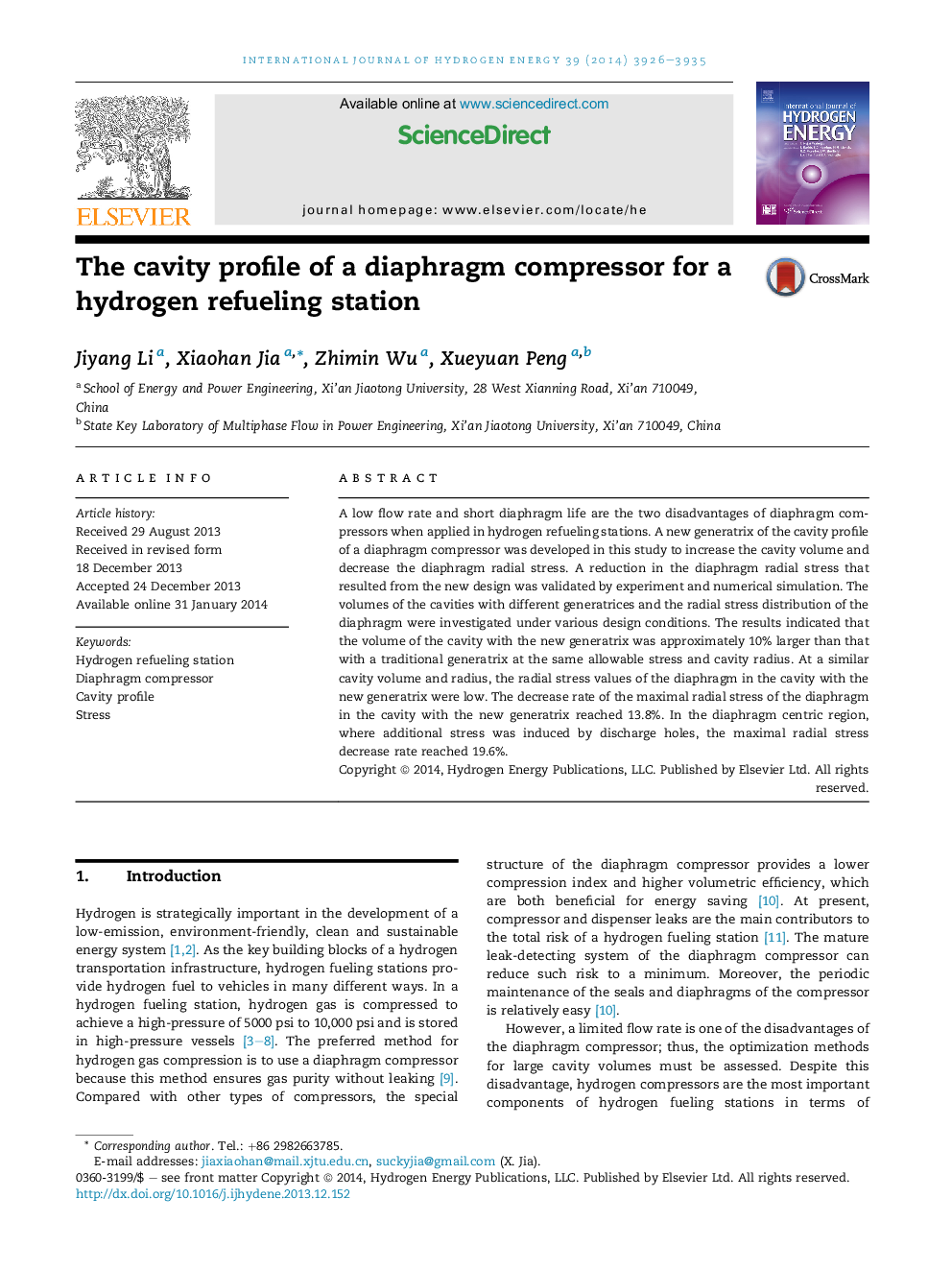| کد مقاله | کد نشریه | سال انتشار | مقاله انگلیسی | نسخه تمام متن |
|---|---|---|---|---|
| 7720204 | 1497501 | 2014 | 10 صفحه PDF | دانلود رایگان |
عنوان انگلیسی مقاله ISI
The cavity profile of a diaphragm compressor for a hydrogen refueling station
ترجمه فارسی عنوان
مشخصات حفره ای کمپرسور دیافراگم برای یک ایستگاه سوخت گیری سوخت هیدروژنی
دانلود مقاله + سفارش ترجمه
دانلود مقاله ISI انگلیسی
رایگان برای ایرانیان
کلمات کلیدی
ایستگاه سوختگیری هیدروژن، کمپرسور دیافراگم مشخصات حفره، فشار،
ترجمه چکیده
سرعت جریان کم و زندگی دیافراگم کوتاه، دو معیاری از کمپرسورهای دیافراگم هستند که در ایستگاه های سوخت گیری هیدروژن استفاده می شوند. در این مطالعه یک الگوی جدید از پروفیل حفره ای یک کمپرسور دیافراگم جهت افزایش حجم حفره و کاهش استرس شعاعی دیافراگم ایجاد شد. کاهش استرس شعاعی دیافراگمی که منجر به طراحی جدید شد، با آزمایش و شبیه سازی عددی مورد تایید قرار گرفت. حجم حفره ها با مولفه های مختلف و توزیع تنش شعاعی دیافراگم تحت شرایط طراحی مختلف مورد بررسی قرار گرفت. نتایج نشان داد که حجم حفره با مولد جدید حدود 10٪ بزرگتر از مقادیر طبیعی سنتی در همان استرس مجاز و شعاع حفره است. در یک حجم و شعاع حفره مشابه، مقدار استرس شعاعی دیافراگم در حفره با مولد جدید پایین بود. نرخ کاهش حداکثر تنش شعاعی دیافراگم در حفره با مولد جدید به 13.8٪ رسیده است. در محدوده دیافراگم محدوده ای که استرس اضافی ناشی از سوراخ های تخلیه ایجاد می شود، میزان کاهش حداکثر تنش شعاعی به 6/19 درصد رسیده است.
موضوعات مرتبط
مهندسی و علوم پایه
شیمی
الکتروشیمی
چکیده انگلیسی
A low flow rate and short diaphragm life are the two disadvantages of diaphragm compressors when applied in hydrogen refueling stations. A new generatrix of the cavity profile of a diaphragm compressor was developed in this study to increase the cavity volume and decrease the diaphragm radial stress. A reduction in the diaphragm radial stress that resulted from the new design was validated by experiment and numerical simulation. The volumes of the cavities with different generatrices and the radial stress distribution of the diaphragm were investigated under various design conditions. The results indicated that the volume of the cavity with the new generatrix was approximately 10% larger than that with a traditional generatrix at the same allowable stress and cavity radius. At a similar cavity volume and radius, the radial stress values of the diaphragm in the cavity with the new generatrix were low. The decrease rate of the maximal radial stress of the diaphragm in the cavity with the new generatrix reached 13.8%. In the diaphragm centric region, where additional stress was induced by discharge holes, the maximal radial stress decrease rate reached 19.6%.
ناشر
Database: Elsevier - ScienceDirect (ساینس دایرکت)
Journal: International Journal of Hydrogen Energy - Volume 39, Issue 8, 6 March 2014, Pages 3926-3935
Journal: International Journal of Hydrogen Energy - Volume 39, Issue 8, 6 March 2014, Pages 3926-3935
نویسندگان
Jiyang Li, Xiaohan Jia, Zhimin Wu, Xueyuan Peng,
